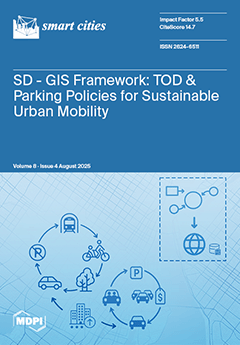Smart governance—the integration of digital technologies into urban governance—is increasingly recognized as a transformative approach to addressing complex urban challenges such as rapid urbanization, climate change, social inequality, and resource constraints. As a foundational pillar of the smart city paradigm, it enhances decision-making,
[...] Read more.
Smart governance—the integration of digital technologies into urban governance—is increasingly recognized as a transformative approach to addressing complex urban challenges such as rapid urbanization, climate change, social inequality, and resource constraints. As a foundational pillar of the smart city paradigm, it enhances decision-making, service delivery, transparency, and civic participation through data-driven tools, digital platforms, and emerging technologies such as AI, IoT, and blockchain. While often positioned as a pathway toward sustainability and inclusivity, existing research on smart governance remains fragmented, particularly regarding its relationship to urban sustainability. This study addresses that gap through a systematic literature review using the PRISMA methodology, synthesizing theoretical models, empirical findings, and diverse case studies. It identifies key enablers—such as digital infrastructure, data governance, citizen engagement, and institutional capacity—and highlights enduring challenges including digital inequity, data security concerns, and institutional inertia. In response to this, the study proposes a multidimensional framework that integrates governance, technology, and sustainability, offering a holistic lens through which to understand and guide urban transformation. This framework underscores the importance of balancing technological innovation with equity, resilience, and inclusivity, providing actionable insights for policymakers and planners navigating the complexities of smart cities and urban development. By aligning smart governance practices with the United Nations’ sustainable development goals (SDG)—particularly SDG 11 on sustainable cities and communities—the study offers a strategic roadmap for fostering resilient, equitable, and digitally empowered urban futures.
Full article





